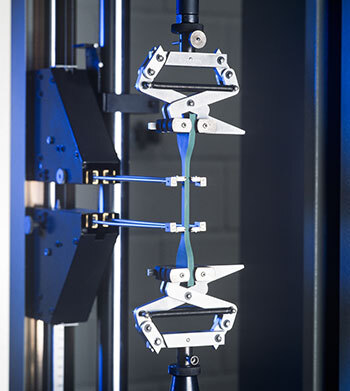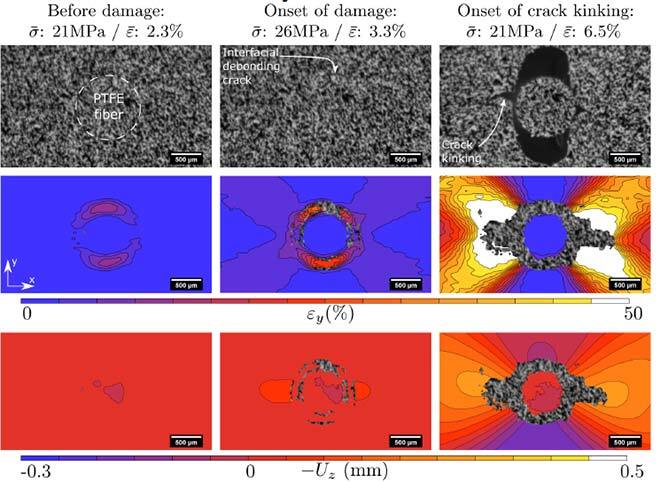Improving Characterization of Heterogeneous Materials for Aerospace

@Ilyass Tabiai
The Exorbitant Cost of Testing

Standard stress test
Composite materials offer many advantages for the aviation industry, the most important probably being their weight, allowing for lighter structures and reduced fuel consumption. As a result, the proportion of this type of material in aircraft manufacturing has been increasing in recent years, with the newest generation of aircraft having reached the 50% threshold. The mechanical behaviour of these materials, however, is difficult to characterize because of their heterogeneity.
Traditional characterization methods of materials are used to pinpoint stress and deformation in a single area (i.e. using a strain gage). However, these methods do not provide enough information about the overall properties of heterogeneous materials like composite materials, and do not bring any understanding of what happens at the junction between two materials.
Consequently, the design process for a new aircraft relies heavily on trial-and-error, during which tens of thousands of tests are carried out. These tests and related expenses account for the greatest portion of development costs for a new aircraft. Limiting the number of tests required calls for an understanding of what happens to composite materials at the microscopic level when subjected to forces.
LEPAC (Laboratory for the Engineering of Polymers and Composites) researchers are working on connecting observations undertaken at the macroscopic level to properties at the microscopic level, a crucial step in gaining a full understanding of heterogeneous materials behaviour.
Field Characterization Methods
In contrast to traditional characterization methods, “full-field” characterization shows the deformation and stress field across the entire part in the form of a contour plot.
Digital Image Correlation
One of the most widely used full-field methods is digital image correlation. Basically, this method uses a completely random pattern drawn on the specimen to be tested. A picture of this unique pattern is then taken and divided into several small squares called subsets. Each subset is composed of a unique pattern. When the specimen is deformed, the pattern deformation is filmed with two cameras to obtain depth. An algorithm then attempts to wedge the deformed pattern over the initial pattern to find the centre of the original subset. Once this calculation is completed for all subsets, a final deformation/stress map is obtained.

Digital image correlation method
This figure shows the experimental results after measurements of the deformation field around a Teflon™ fibre (also called “PTFE”) are taken while vertical stress forces are applied to the fibre. The first line shows the images obtained by one camera during the experiment. It illustrates black dot speckling over white paint. The second line shows the evolving vertical deformation field during the experiment, and the last line shows the displacements toward the camera, i.e. the depth. Image correlation is used to measure and visualize these fields for the entire area under observation.
This method, although very useful, has one limitation: it cannot study components smaller than 10 micrometres. Because some components of composite materials (e.g. the diameter of a carbon fibre) measure less than 10 micrometres, it is impossible to understand the whole phenomena occurring inside composite materials with this method alone. ELPAC researchers intend to complement it with another method discovered long ago, but somewhat neglected: interferometry.
Interferometry
Interferometry has been around since the 1960s. It works somewhat like digital image correlation except that the pattern is created naturally, by the asynchronous projection of two lasers on a part. The random pattern is created by the surface roughness of the part interacting with the laser wavelengths. The delicate pattern makes it possible to measure details of sizes smaller than the laser wavelengths, around 0.5 micrometre. Unfortunately, it is not widely used because, on the one hand, it is only accurate for extremely small areas and, on the other hand, no software exists as yet to perform the level of calculations required for this application.
A Multi-Scale Vision
LEPAC researchers intend to develop the calculation algorithms needed to facilitate the characterization of heterogeneous sources with interferometry. This method, combined with digital image correlation, will provide a complete view of the behaviour of composite materials. Better understanding will also increase the integration potential of new processes like additive manufacturing, which by their very nature, introduce heterogeneity to materials.



